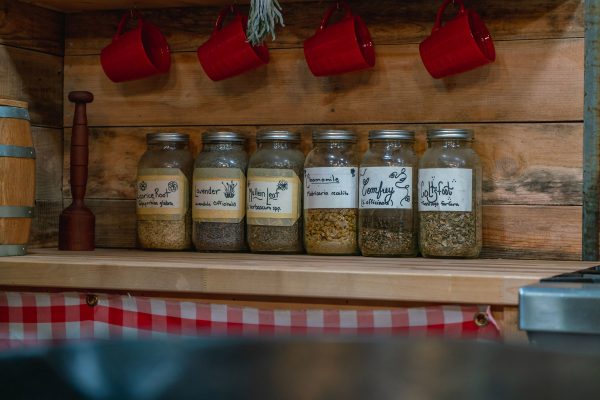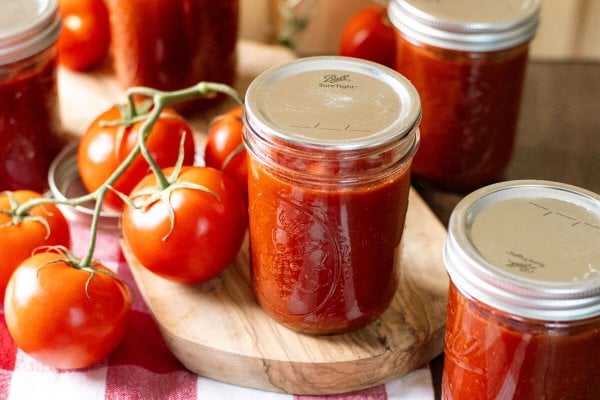Is freeze drying really something that is reasonable for the average homesteader? Join me for this Pantry Chat Podcast with Matt Neville from Harvest Right as we discuss freeze dryer practicality, usage, energy consumption, and other frequently asked questions.

I’ll be honest. When I first saw freeze dryers being made for home use, I thought, “Do we really need another gadget in our kitchens?”
I probably never would have purchased a freeze dryer, either. But when Harvest Right reached out to us and offered to give us a machine for our honest review, we said yes. One year later, we found ourselves purchasing a second unit to maximize harvest preservation and currently have the extra large model ready to set up (granted, we are a family of 13!).
In the few years I’ve been freeze drying, I have learned so much. From freeze drying herbs to freeze drying fruit, I feel like we’ve tried it all. Now I can share my seven simple steps for freeze drying and mistakes to avoid.
I also published a book about freeze drying, Freeze Drying the Harvest. Just when I thought I’d tried it all, a whole new world has been opened to me.
How about a freeze dried sourdough starter, or our youngest’s newest obsession, freeze dried yogurt bites? The recipe testing has certainly been fun, and none of my kids mind taste-testing either!
And honestly? It’s really easy and fun!
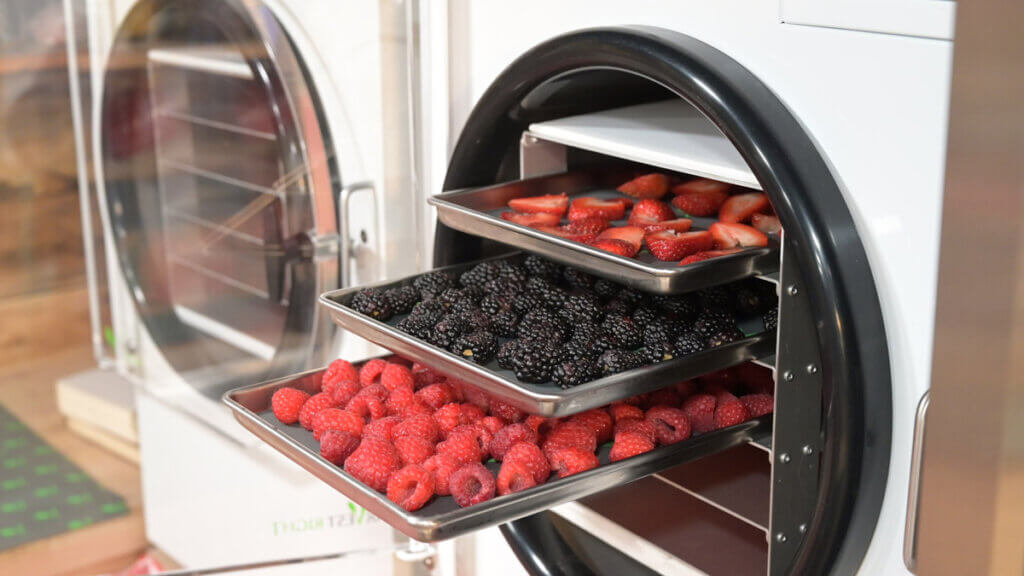
Are Freeze Dryers Affordable?
Freeze drying has been around for a long time, but it’s only been in the past ten years that freeze drying was made accessible to homes. Matt jokes that the first freeze dryer was about the size of a bus and cost $30,000.
Over the years, Harvest Right has continued to research and create ways to make freeze drying more accessible to the common household. In fact, the machines that used to cost $5,000 are now closer to $2,500. Though that’s still a large investment for many, it’s headed in the right direction and becoming more affordable to more people (and be sure to keep reading for inspiration on how to pay off your freeze dryer quickly).

Using Freeze Dryers to Eliminate Food Waste
One of my favorite things about the freeze dryer (and Matt agrees) is that we can eliminate food waste. For our family, we’re usually feeding 14 people at each meal. If we have any leftovers, there’s usually never enough to merit another meal because it wouldn’t feed all of us.
What I like to do is keep freeze dryer trays in the freezer, and with the leftovers, portion out individual servings on the trays. Once I have enough trays to run through the freeze dryer, we’re left with multiple meals for people to take to work or heat up if they get home after dinnertime.
It’s been fantastic for reducing our food waste. Check out how to freeze dry chicken pot pie (pictured above).
Matt shares how his wife will find deals on produce that’s about to go bad (like a huge box of “almost too ripe” bananas). Before it goes bad, she slices and freeze dries it and ends up with delicious and healthy freeze dried fruit snacks for a fraction of the cost.
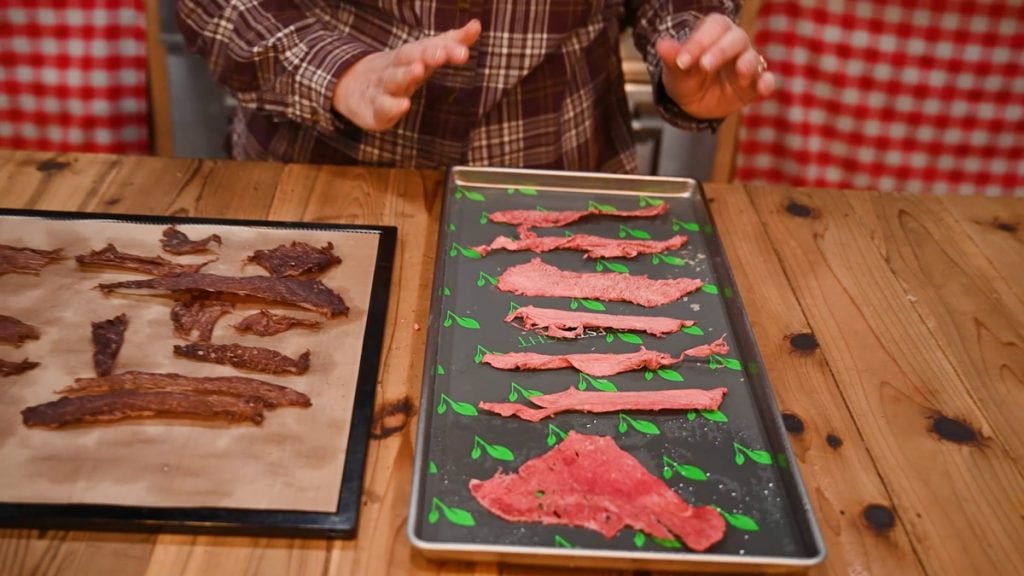
Freeze Drying vs. Dehydrating
There is a big difference between freeze drying and dehydrating. In a nutshell, both methods remove water from the food, but there are certain foods that cannot be dehydrated (such as eggs, milk, ice cream, etc.).
Except for items such as homemade jerky or fruit leather, most preserving we do is done in the freeze dryer. Though we love our dehydrators, the biggest advantage of freeze dried food is the nutritional value and shelf life of the end product. To learn more, check out these blog posts on freeze dried vs dehydrated foods and how to store freeze dried food.

How to Rehydrate Freeze Dried Food
When it comes to rehydrating freeze dried food, there is technically a right way to do it. However, after three years of freeze drying, I’ve learned you don’t have to be very fussy with it.
If you want to get technical, you can weigh your tray of food prior to freeze drying it and then weigh it again after it’s completely freeze dried. The difference in weight is how much water you should add back to the entire tray to rehydrate that food.
But many of us live real lives and don’t have the time to do this. Matt explains rehydrating freeze dried foods is like making instant oatmeal. The first time you make oatmeal you probably got out the measuring cups and added the precise amount of water called for. But after making it a few times, if you’re like me, you now just eyeball how much water needs to be added, adding a little more or draining some water off, depending on the desired consistency.

Tips for Rehydrating
I’ve heard of people freeze drying and then perfectly rehydrating bread, which totally blows my mind! So, I asked Matt to share his tips for rehydrating food for the best results.
- Cooked Foods – Matt’s first tip is pretty basic but important. If you’re rehydrating cooked foods, you’ll rehydrate with hot water.
- Raw Foods – Like the first tip, the second is also important. If you’re rehydrating uncooked or raw foods, you’ll rehydrate with cold water.
- Tricky Foods – When rehydrating foods that you want to stay “pretty” and maintain their natural shape and texture, you can also use a steam method. For example, if I freeze dry individual portions of lasagna and take it on a backpacking trip, I’m probably just going to pour over boiling water and eat it as a “lasagna mash.” But if I wanted that lasagna to maintain its shape, Matt mentioned using the Instant Pot, adding some water to the bottom, and cooking it by steam in the Instant Pot.

How Much Electricity Does a Freeze Dryer Use?
This number will vary based on your unique situation, but here is more information on how much it costs to run an average batch in the freeze dryer. We’ve not done any testing when it comes to the exact cost of running our freeze dryers.
This past summer, we ran our freeze dryer non-stop daily while preserving the harvest. We thought we’d see a huge jump in our electricity bill, but we actually didn’t notice.
Matt says his freeze dryer costs him about $1.40-$1.60 per day. So if he runs 10-15 batches per month, not only will you be amazed at how much food that adds up to, but the total cost is only about $30-$44 per month.
No matter what the preservation method (except for perhaps fermenting or using the sun and wind to dehydrate), every method takes some form of energy. Whether you’re freezing your harvest of corn and slowly eating it throughout the year, you’re paying for the daily cost of running a freezer. Canning up a year of bone broth costs money to heat the pressure cooker. Dehydrating food in an electric dehydrator uses electricity, etc.
Though the freeze dryer does have a long run time, it can also preserve quite a bit at once. Matt likes to look at it from this perspective…
If you have upwards of two or three freezers in your home (one for the fruit and vegetables, one for the meat, and one for everything else), consider freeze drying your fruit and vegetables and eliminating the cost of running power to that freezer for an entire year.
That’s probably going to save you money vs the energy it takes to run the freeze dryer and preserve the food in that freezer.

Tips to Pay Off Your Freeze Dryer
There are cottage laws in the U.S. that allow many people to freeze dry candy in their homes and resell it at Farmer’s Markets and other places. This is an incredible way to maximize the productivity of your machine.
Anytime you’re not running your freeze dryer for your preservation needs, toss a batch of Skittles in, freeze dry them, package them up, and resell them. Many people have told us this is exactly what they did to pay off their freeze dryer within six months.

How Much Food Fits in the Freeze Dryer
There are four sizes of the Harvest Right Freeze Dryer, small, medium, large and extra large. What is the best Harvest Right Freeze Dryer for you?
The main difference in the machines is the number of trays they come with. About two trays are the equivalent of a 9×13 casserole pan, so that will give you an idea of how much food each size will fit.
- Small Freeze Dryer: 7-8 pounds of food and comes with four trays.
- Medium Freeze Dryer: This is the most popular size and is great if you have a smaller hobby garden. It will freeze dry about 12 pounds of food per batch and comes with five trays.
- Large Freeze Dryer: 16-20 pounds of food per batch and comes with six trays.
- Extra Large Freeze Dryer: 35 pounds of food per batch and comes with seven trays that are larger than the other trays.

Can You Overfill Your Freeze Dryer?
I’ve always wondered what happens if you fill your freeze dryer too full. There are basic recommendations when it comes to filling the trays, but Matt assured me that there’s no harm in overfilling your trays, it will just take longer to freeze dry your food.
This is good to know from a safety perspective, but I’d still recommend following recommended ratios when filling trays to ensure your food is getting processed in less time.

Do Freeze Dried Foods Really Maintain Their Nutritional Value?
Many studies have been done on nutrition in freeze dried food. In fact, Matt shared that some of the government organizations that come up with the nutritional values of certain foods, they’ll freeze dry the food first and then study the nutritional content.
There is always a slow loss of nutrients when it comes to preserving food, however, freeze drying is the slowest.
What Foods Shouldn’t Be Freeze Dried
We’ve covered what foods you should not freeze dry before, so be sure to read that post for more in-depth details. But in general, you want to avoid freeze drying foods that have a high fat content.
For example, if you want to freeze dry ground beef, choose a leaner option, cook the meat, strain off the excess fat, then season it up and freeze dry it.
This doesn’t mean you can’t freeze dry foods with a high fat content. For example, freeze dried bacon is incredible. However, it’s not ideal for long-term storage. It is fun to freeze dry and eat within a few months.
Another trick to freeze drying foods that have a higher fat content is to freeze dry them, seal them up and store them in the freezer. This will help extend the shelf-life.

Is the Oil Easy to Change?
I’ve received many emails with people concerned they won’t be able to change the oil themselves. Let me be the first to say I can change the oil in my machine! It’s not like changing the oil in your car. Basically, if you can pour yourself a drink from a container with a spigot, you can change the oil in your freeze dryer.
However, if this is still a concern, there are oil free options available, but they are more expensive.
How to Clean a Freeze Dryer
Recently, we had an unfortunate incident where one of my children freeze dried applesauce. I don’t think they pre-froze the applesauce, so when the motor kicked on, there was a bit of a “poof” and it left a very sticky mess inside the machine. I asked Matt what his best advice was for getting the machine clean.
He said to pull the door gasket off, remove the shelving unit and use a mild detergent to clean it up. Though I haven’t tried this yet, once he explained that it made perfect sense and I’m sure it will be a breeze.
Some people have commented about their machines getting some condensation and mold buildup on the inside. We’ve never had this happen, but after we run our machine, we tend to leave the door open slightly to allow for good airflow and ventilation.
If you find you’re experiencing this issue, give the machine a proper deep cleaning, then prop the door open after each use and see if that helps.

What’s the Strangest Thing You Can Freeze Dry?
I had to ask Matt about the strangest things he’s heard of people using their freeze dryers for. Some of these surprised me, and some gave me a good laugh. (Our freeze dried sourdough starter pictured above!)
- Taxidermy (like little birds or other animals)
- Antlers/Horns
- Flowers/Herbs
- Books (that got wet, and you’re trying to salvage them)
- Phones
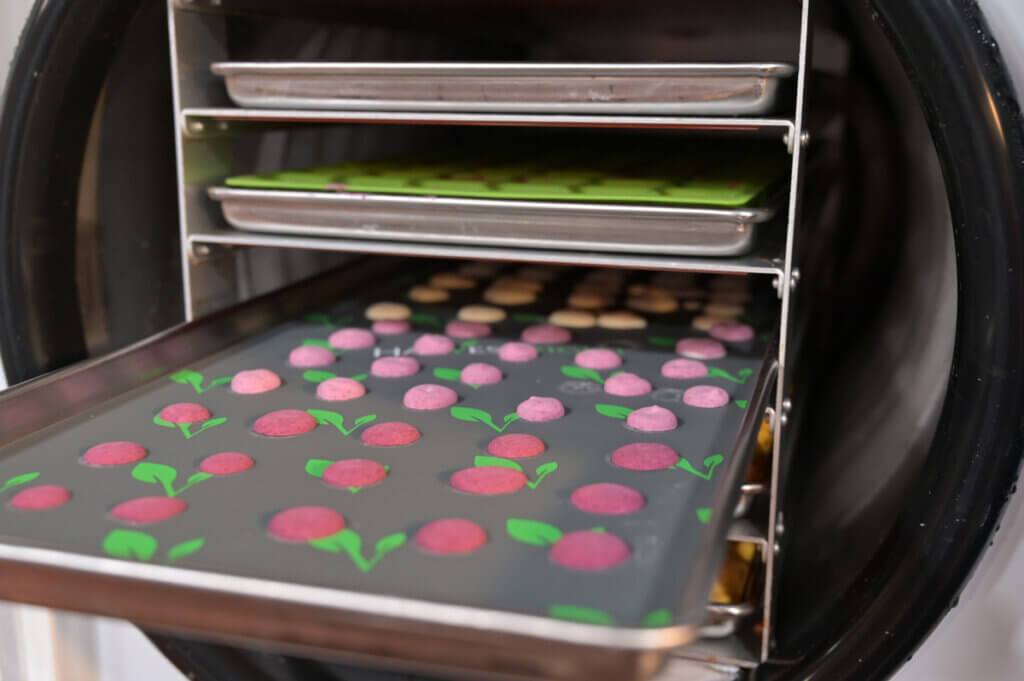
Learn More About Harvest Right
We’ve written so many posts about freeze drying. You can check out our freeze drying archives here. If you’re interested in purchasing a freeze dryer, they often have great sales. So check out Harvest Right for more information.

The Abundant Pantry: Freeze Drying Masterclass
If you are ready to take your freeze drying skills to the next level, you don’t want to miss my Freeze Drying Masterclass. This class was designed to be taken independently or as a companion to my book Freeze Drying the Harvest. In this online course, you will receive:
- 70+ detailed video lessons, including step-by-step setup instructions and complete batch walkthroughs for fruit, veggies, meat, meals, liquids, living food, desserts and more!
- 24/7 Lifetime access! Watch over and over again, anytime!
- 166 Page Class workbook that includes pre-treatment instructions, rehydration charts and full recipes
- Complete the troubleshooting section to confidently navigate any errors
By the time you finish this class, you will be filling your pantry with nutrient-dense, delicious freeze dried fruit, veggies, milk, eggs, meat, meals (and more) like a pro. Enroll today and receive instant access!












